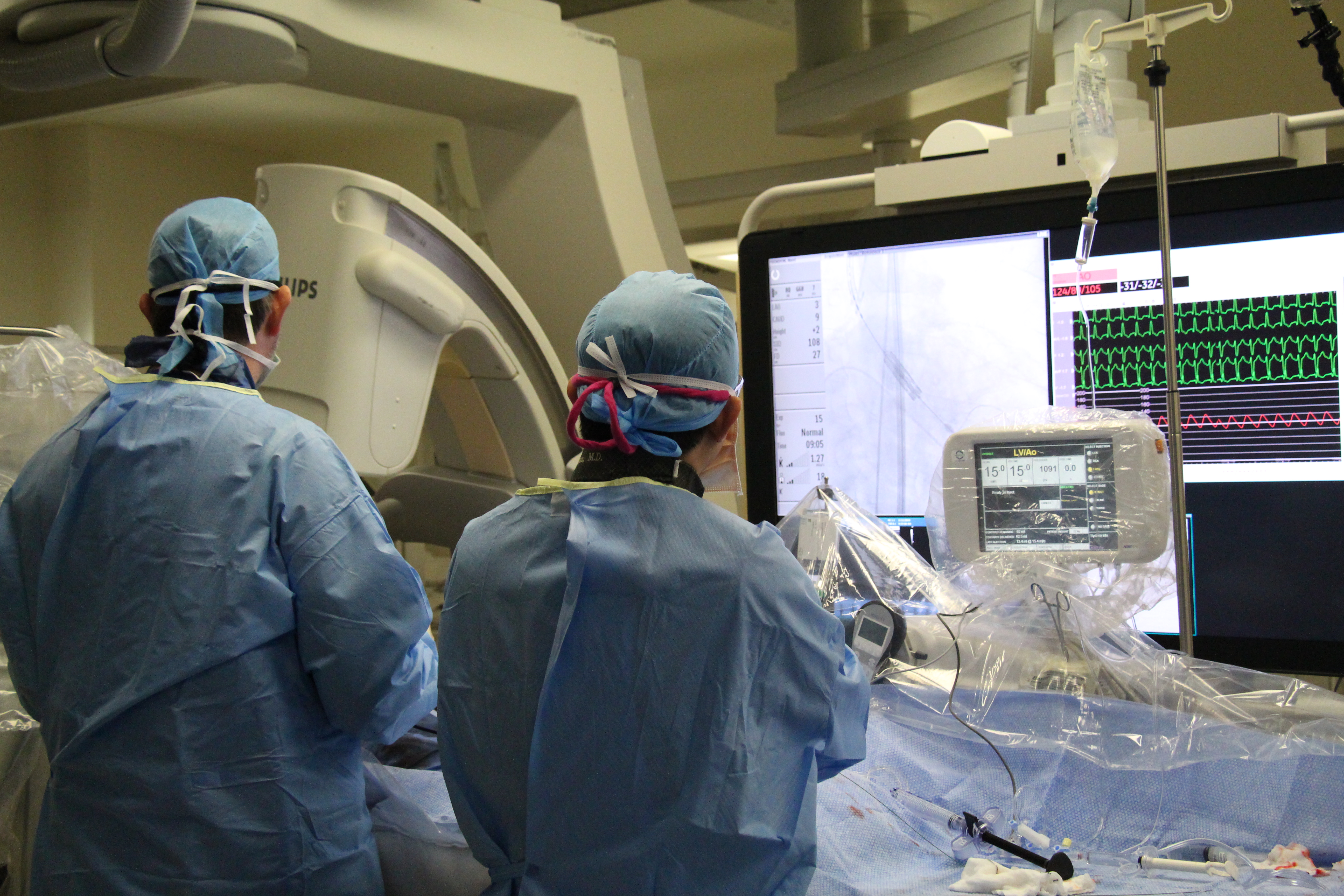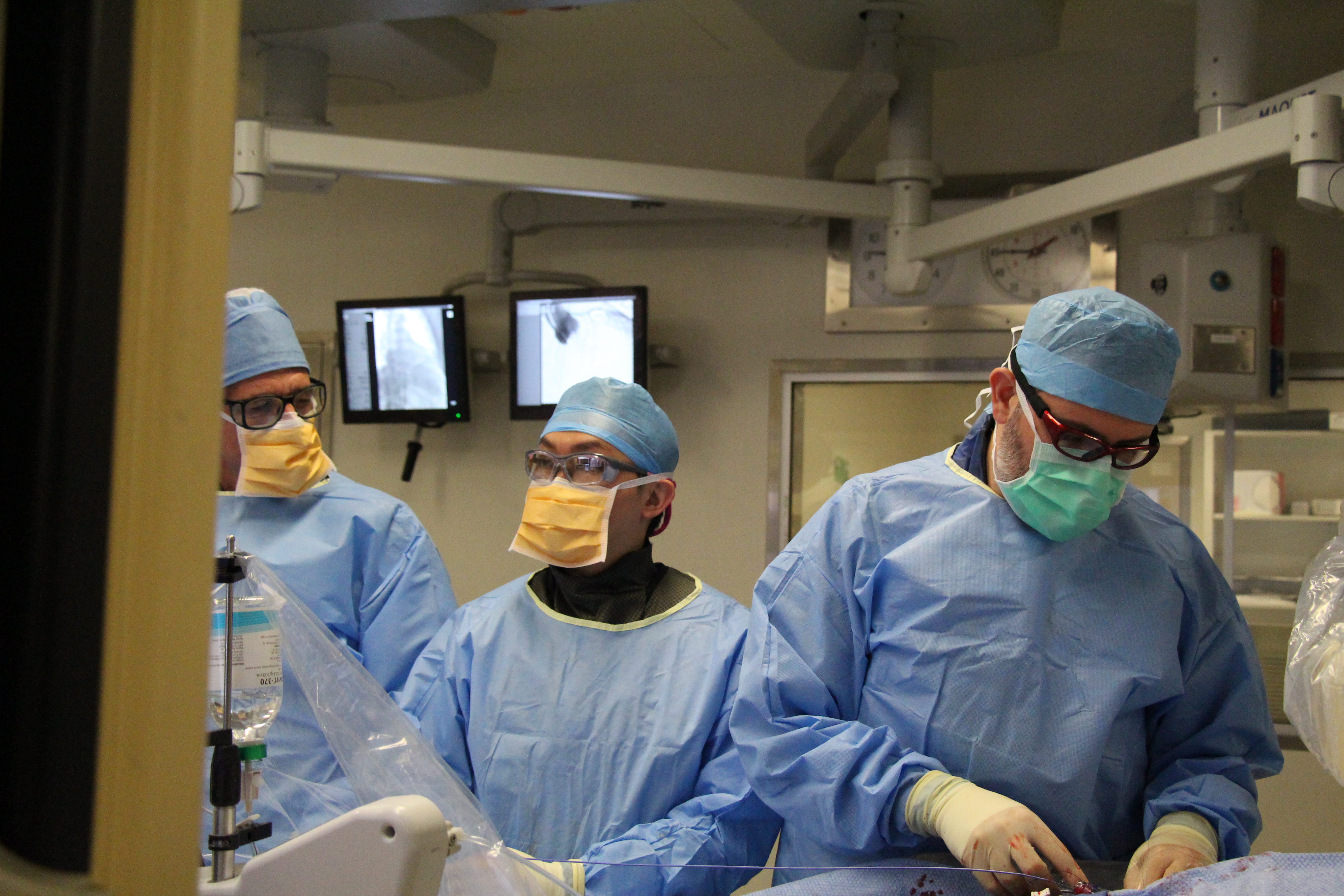Education and awareness is the first and vital step to treating any structural heart condition. Here at the Queensland Heart Institute, we are committed to educating both the medical fraternity and patients and their families on disease and therapy awareness in structural heart disease.

Therapy Awareness



Aortic Stenosis
Video: Dr Karl Poon explains Aortic Stenosis.
Aortic stenosis is the narrowing of the heart’s aortic valve, preventing it from opening fully, and thus reducing or blocking the heart’s blood flow. Patients with severe aortic stenosis have a survival rate as low as 50% at 2 years, and 20% at 5 years without aortic valve replacement.2
Aortic valve replacement is regarded as the definitive therapy for severe aortic stenosis. The multi-disciplinary heart team will conduct a thorough evaluation of the patient’s status and make the final treatment decision for either surgical AVR (SAVR) or transcatheter aortic valve implantation (TAVI), which is a less invasive treatment compared to surgery. This decision will be made based on patient risk for surgery and suitability, amongst other clinical considerations such as frailty, comorbidities.2
TAVI/R
Video: Dr Alex Incani explanins discusses the indications for TAVI
Transcatheter Aortic Valve Implantation or Replacement (TAVI/R) is a minimally invasive procedure where e a biological (tissue) valve is mounted inside a stent (a circular wire mesh). The stent is then compressed so that it can fit inside a small delivery sheath (tube). The TAVI valve is then delivered to the aortic valve, the stent is expanded, and the biological valve inside begins to work. In TAVI the calcified leaflets of the patient’s diseased aortic valve are not removed; instead, they are pushed to the side when the stent expands and help to lock the stent in place.
There are multiple ways of delivering the TAVI valve to the aortic valve position including:
- Transfemoral – The delivery sheath is inserted into the femoral artery in the patient’s groin, and the TAVI valve travels upwards through the artery to the aortic valve.
- Transapical – A 5-10cm horizontal incision is made on the left side of the chest below the nipple line, which provides direct access to the heart. The delivery sheath is then inserted in the apex of the heart and the TAVI valve inserted.
- Transaortic – A small incision at the top of the sternum (breast bone) is made and that the delivery sheath is inserted into the aorta (the large blood vessel that the aortic valve is in).3 This explanation relates to one commercially available TAVI in Australia.


Also known as valvulotomy or valvotomy, balloon valvuloplasty is a procedure that repairs a narrowed heart valve by widening it. This narrowing of the valve is due to aortic valve stenosis.
During this procedure, the doctor inserts a special catheter into a large artery in the groin and threads it through the blood vessels just above the aortic valve. The catheter will then be advanced to sit within the narrowed aortic valve. When it is in position the balloon is inflated and deflated several times until the diseased valve can open and close more effectively then before the procedure. Once the physician is satisfied with the effect of this treatment, the guidewire, balloon and catheter are removed via the groin access.
Balloon valvuloplasty is considered a temporising treatment only, as many of the symptoms such as shortness of breath, exertional chest pain may return in 6-12 months. The defintive treatment for aortic stenosis is a replacement of the diseased valve, if clinically appropriate or passing out.

